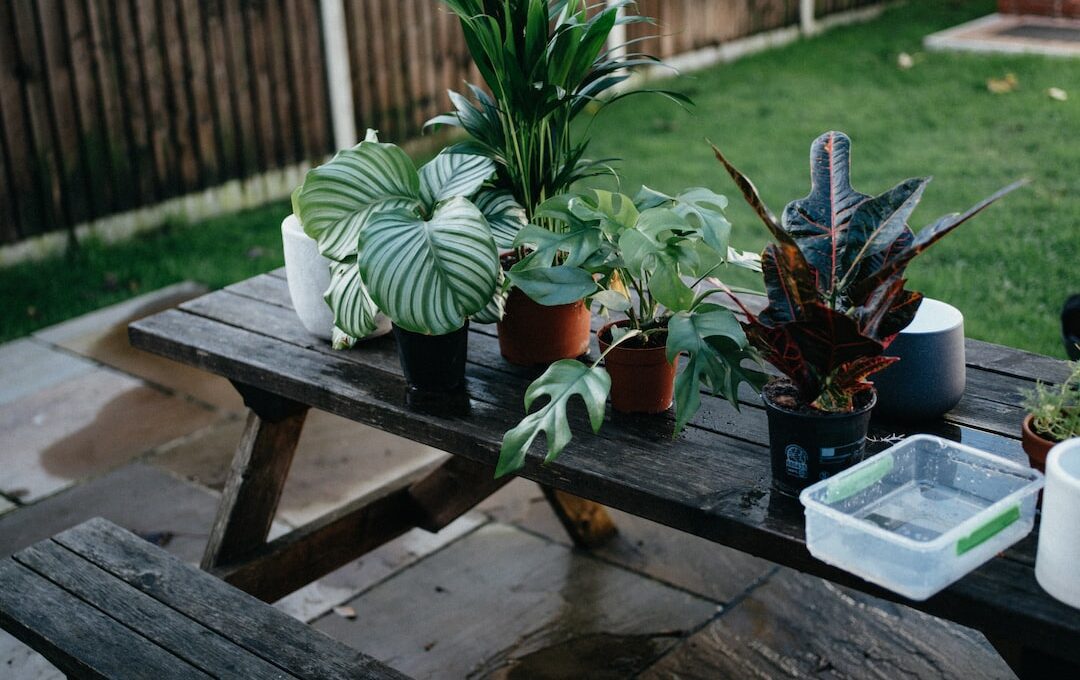Are you wondering how often you should water your lawn to keep it healthy and vibrant? Proper watering is essential for the health and longevity of your grass. By following a few simple guidelines, you can ensure that your lawn stays green and lush all year round.
First, it’s important to understand your grass type and climate. Different types of grass have different water requirements, and the climate in your area will also play a role in determining how often you should water. Additionally, consider the time of year. During hot summer months, your lawn will need more frequent watering than in cooler seasons.
To promote deep root growth and prevent shallow root systems, it’s best to water deeply and infrequently. This encourages the roots to search for water deeper in the soil, making your grass more resilient and drought-tolerant. Using proper irrigation techniques, such as sprinklers or drip systems, can help ensure even and efficient watering.
Monitoring soil moisture is crucial to avoid over or under watering. Use a moisture meter or simply check the soil by hand to determine when it’s time to water. Watering in the morning is ideal, as it allows the grass to dry before evening, minimizing the risk of disease.
Be mindful of rainfall and adjust your watering schedule accordingly. If there has been ample rainfall, you may not need to water as frequently. Observing your lawn regularly and making adjustments as needed will help you maintain a healthy, thriving lawn.
By following these guidelines, you can keep your lawn looking its best while conserving water and promoting a safe environment for your family and pets.
Quick Summary
- Different grass types have different water requirements.
- Water deeply and infrequently for deep root growth.
- Adjust watering schedule based on rainfall.
- Use a smart irrigation system to conserve water.
Understand Your Grass Type and Climate
Understanding your grass type and climate is crucial in determining the frequency at which you should water your lawn. When it comes to grass type selection, it’s important to choose a variety that is well-suited for your specific climate.
Certain grass types, like Bermuda grass, thrive in hot and dry climates, while others, like Kentucky bluegrass, prefer cooler and more humid conditions. By selecting the right grass type for your climate, you can ensure that your lawn will be better adapted to withstand the weather conditions in your area.
Once you have chosen the appropriate grass type, it’s important to understand how it adapts to your climate. Different grasses have different water requirements, and understanding these needs is essential for maintaining a healthy lawn.
Some grass types, such as fescue, have deep roots that allow them to survive longer periods without water, while others, like ryegrass, have shallow roots and require more frequent watering.
In addition to considering your grass type, you should also take into account your climate. If you live in a hot and arid region, you may need to water your lawn more frequently to prevent it from drying out. On the other hand, if you live in a cooler and more humid climate, you may not need to water as often.
By understanding your grass type and climate, you can make informed decisions about how often to water your lawn. This will not only help you maintain a healthy and vibrant lawn, but also ensure that you are using water efficiently and responsibly.
Consider the Time of Year
Taking into account the season, it’s crucial to adjust the frequency of lawn irrigation. Different seasons require different watering schedules to ensure the health of your lawn.
Here are some tips for watering during different seasons while conserving water.
During the hot summer months, your lawn will need more frequent watering. Aim to water your lawn deeply, but less often. This encourages the roots to grow deeper and become more resilient to drought. Water your lawn early in the morning or late in the evening to minimize evaporation.
In the cooler fall season, you can reduce the frequency of watering. As the temperatures drop, your lawn will require less water. Water your lawn deeply every 7-10 days, depending on the rainfall in your area. This will help the grass prepare for the winter months ahead.
In the winter, you can generally reduce or stop watering altogether. Most grass types go dormant during this time and don’t require as much water. However, if you live in a dry climate where the grass stays green, you may need to water occasionally.
To conserve water while still keeping your lawn healthy, consider using a smart irrigation system. These systems use weather data to adjust watering schedules accordingly. Additionally, avoid watering on windy days to prevent water wastage.
By following these tips for watering during different seasons, you can keep your lawn healthy while conserving water, ensuring the safety of your outdoor space.
Water Deeply and Infrequently
To encourage deep root penetration, avoid shallow watering that promotes shallow root growth. Instead, water your lawn less frequently but for longer durations. This will allow the water to penetrate deep into the soil, encouraging the roots to grow deeper and making your lawn more resilient.
Avoid shallow watering that promotes shallow root growth
Avoiding shallow watering will result in a lawn with deep and strong roots. When you water your lawn deeply and infrequently, you prevent shallow root growth and promote a healthier lawn.
Here are some watering techniques to help you achieve this:
- Water in the early morning or late evening to minimize evaporation.
- Use a sprinkler or irrigation system that provides even coverage.
- Allow the water to soak into the soil slowly to ensure deep penetration.
- Avoid overwatering, as it can lead to waterlogging and disease.
- Monitor the moisture level of your lawn by checking the soil regularly.
By following these techniques, you can ensure that your lawn’s roots grow deeper, making them more resilient and resistant to drought.
Remember, deep and strong roots are essential for a healthy and safe lawn.
Water less frequently but for longer durations to encourage deep root penetration
Watering less frequently but for longer durations allows for deep root penetration, resulting in a stronger and healthier lawn. When it comes to irrigation methods, it’s important to find the right balance.
Instead of shallow watering, which can lead to shallow root growth and weak grass, try adjusting your watering schedule. By watering less often, you encourage the roots to grow deeper into the soil, making your lawn more resilient to drought and disease. This method also helps prevent water runoff and promotes water conservation.
So, instead of watering your lawn every day for short periods, consider watering every few days for longer durations. This way, you give the water enough time to reach the deeper layers of the soil, ensuring your lawn stays lush and green.
Use Irrigation Techniques
Consider using sprinklers or a drip irrigation system to water your lawn. These techniques can provide a consistent and even distribution of water, which is crucial for maintaining a healthy and green lawn. Make sure to adjust the sprinklers or drip irrigation system to cover the entire lawn area for optimum watering.
Consider using sprinklers or drip irrigation systems
Using sprinklers or a drip irrigation system will help create a lush, vibrant lawn that glistens with the morning dew. When it comes to maintaining your sprinklers, it’s important to regularly check for any leaks or clogs in the system. This will ensure that your lawn is receiving the proper amount of water without any wastage.
Additionally, it’s crucial to adjust the sprinkler heads to ensure they are watering the lawn evenly and not spraying onto sidewalks or driveways. As for drip irrigation, this method offers numerous benefits. It delivers water directly to the roots of plants, reducing evaporation and water waste. Drip irrigation also prevents the growth of weeds and minimizes the risk of disease by keeping foliage dry.
By utilizing these techniques, you can maintain a healthy lawn while conserving water and promoting safety.
Ensure even distribution of water across the lawn
To ensure an even distribution of water across your lawn, it’s essential to regularly inspect your sprinkler system for any leaks or clogs. This will help prevent areas of your lawn from being overwatered or underwatered, which can result in uneven growth and potential damage to your grass.
Start by checking the sprinkler heads to make sure they’re all functioning properly and spraying in the right direction. Adjust or replace any broken or misaligned heads to ensure even coverage. Additionally, consider using sprinkler heads with adjustable patterns or rotating heads to achieve more uniform watering.
Another tip is to avoid overlapping sprinkler patterns, as this can lead to excessive watering in certain areas. By following these even watering techniques and lawn watering tips, you can maintain a healthy and vibrant lawn.
Monitor Soil Moisture
Monitoring the soil’s moisture levels is crucial for maintaining the health and vibrancy of your lawn. Proper watering techniques depend on knowing when and how much to water. By monitoring soil moisture, you can ensure that your lawn is getting the right amount of water it needs to thrive.
To help you understand the importance of soil moisture monitoring, let’s take a look at this 2 column and 4 row table:
| Moisture Level | Description |
|---|---|
| Wet | The soil is saturated with water. Overwatering may cause issues like root rot. |
| Moist | The soil is damp but not soaked. This is the ideal moisture level for most lawns. |
| Dry | The soil feels dry to the touch. Your lawn may need watering soon. |
| Very Dry | The soil is extremely dry and may require immediate watering to prevent damage. |
By regularly checking the soil moisture, you can avoid overwatering or underwatering your lawn. Overwatering can lead to shallow root growth and the growth of weeds, while underwatering can result in dry, brown patches. Monitoring the moisture levels will help you strike the right balance and maintain a healthy lawn.
Remember, safety is important when it comes to your lawn. Avoid overwatering to prevent water runoff and potential hazards like slippery surfaces. By monitoring soil moisture and following proper watering techniques, you can keep your lawn lush and green while ensuring safety for yourself and your family.
Will Diverting Water in My Yard Affect How Often I Should Water My Lawn?
Diverting rainwater in your yard can significantly impact the frequency of lawn watering. By implementing effective techniques, such as creating swales or installing rain barrels, you can harvest rainwater to nourish your lawn naturally. Understanding how to redirect rainwater in your yard allows for better water management, reducing the need for additional watering and promoting the health of your lawn.
Water in the Morning
Start your day off right by giving your lawn a refreshing drink in the morning. When it comes to watering techniques, timing is crucial. Optimal watering times are in the early morning, before the sun rises high in the sky. This is because watering during the cooler part of the day helps prevent evaporation, allowing the water to penetrate deeper into the soil and reach the roots of your grass.
By watering your lawn in the morning, you’re giving it a head start for the day. The grass blades have an opportunity to dry out before nightfall, reducing the risk of diseases caused by prolonged moisture. Watering in the morning also allows the sun to help evaporate any excess water, preventing fungal growth and keeping your lawn healthy.
Additionally, watering your lawn in the morning ensures that your grass has enough moisture to withstand the heat of the day. This helps to prevent stress and wilting, keeping your lawn lush and green. It also allows you to conserve water, as less is lost to evaporation compared to watering during the hotter parts of the day.
So, make it a habit to water your lawn in the morning. Not only will you be starting your day off right, but you’ll also be providing your lawn with the optimal conditions for growth and health.
Adjust for Rainfall
Now that you know the importance of watering your lawn in the morning, let’s discuss how to adjust your watering schedule for rainfall.
It’s crucial to adapt your lawn care routine based on the weather conditions to ensure the health and vitality of your grass.
When it rains, you might think that your lawn doesn’t need any additional watering. However, it’s essential to consider the factors that affect how much water your lawn actually receives.
One way to do this is by using a rain gauge to measure the amount of rainfall your lawn has received. This will give you a better understanding of how much water your grass has already absorbed.
Another factor to consider is evapotranspiration rates, which is the combined process of evaporation from the soil and transpiration from plants. During rainy periods, evapotranspiration rates may decrease, meaning your lawn requires less water than usual.
To help you adjust your watering schedule accordingly, here are some tips:
- Check your rain gauge regularly to determine if your lawn has received enough water from rainfall.
- Monitor the evapotranspiration rates in your area to understand how much water your lawn needs.
- If rainfall has been substantial, consider reducing or skipping a watering session to prevent overwatering.
- Keep an eye on the weather forecast to anticipate upcoming rain events and adjust your watering schedule accordingly.
By being mindful of rainfall and evapotranspiration rates, you can ensure that your lawn receives the appropriate amount of water and maintain a healthy and vibrant green space.
Observe and Adjust
To ensure the health and vitality of your grass, it’s essential to observe and adjust your lawn care routine based on weather conditions. One important aspect of this is adjusting the frequency of watering. By observing changes in weather patterns and rainfall, you can determine when it’s necessary to water your lawn and when it’s not. This not only helps conserve water but also prevents overwatering, which can lead to issues like root rot and fungal diseases.
To make this process easier, you can create a simple table to keep track of rainfall and adjust your watering schedule accordingly:
| Rainfall Amount | Watering Frequency |
|---|---|
| Less than 0.5" | Increase |
| 0.5" to 1" | Maintain |
| 1" or more | Decrease |
By using this table as a guide, you can easily determine how much water your lawn needs based on the amount of rainfall. For example, if there has been less than 0.5" of rain, it’s important to increase your watering frequency to compensate for the lack of natural moisture. On the other hand, if there has been 1" or more of rain, you can decrease your watering frequency to avoid overwatering.
Remember, adjusting the frequency of watering based on observed changes in weather is key to maintaining a healthy and vibrant lawn. So keep an eye on the rainfall and make the necessary adjustments to keep your grass in top shape.
Frequently Asked Questions
Should I water my lawn more frequently during the summer months?
Yes, you should water your lawn more frequently during the summer months. This is because the hot weather and increased evaporation rates can dry out your lawn faster. Deep watering provides many benefits, including stronger and healthier roots.
Can I use a sprinkler system to water my lawn effectively?
You can effectively water your lawn with a sprinkler system. Regular sprinkler maintenance ensures proper function. However, consider alternative watering methods like drip irrigation to conserve water and prevent overwatering. Safety is important when using any watering system.
Is it necessary to adjust my watering schedule if it rains frequently in my area?
To ensure the health of your lawn, it is important to adjust your watering schedule if it frequently rains in your area. Excess water can lead to overwatering, which can cause issues like root rot and fungal diseases.
How do I know if my soil moisture levels are appropriate for my lawn?
To ensure your lawn is properly hydrated, regularly check the soil moisture levels. Use a soil moisture meter or simply feel the soil with your hands. Maintain optimal hydration to keep your lawn healthy and safe.
Are there any specific techniques or methods to water my lawn in the morning efficiently?
To efficiently water your lawn in the morning, use techniques like deep watering and avoiding overwatering. This ensures your lawn receives enough moisture without wasting water, promoting safety and healthy growth.
Conclusion
So, now you know how often you should water your lawn! Remember to consider your grass type and climate, as well as the time of year.
Water deeply and infrequently, using irrigation techniques to ensure proper coverage. Monitor soil moisture and water in the morning for optimal absorption. Adjust your watering schedule accordingly if there’s rainfall.
By observing and adjusting, you can keep your lawn healthy and lush all year round. Happy watering!









